Water painting
Mrs. Chandler created many water paintings for her books, including Hakata dolls, daily life, and the culture she saw during her stay. In addition, she also painted a lot of the flower arrangements she created in the hope of introducing different cultures more vividly and understandably to local children when she opened the museum in Texas in the future.
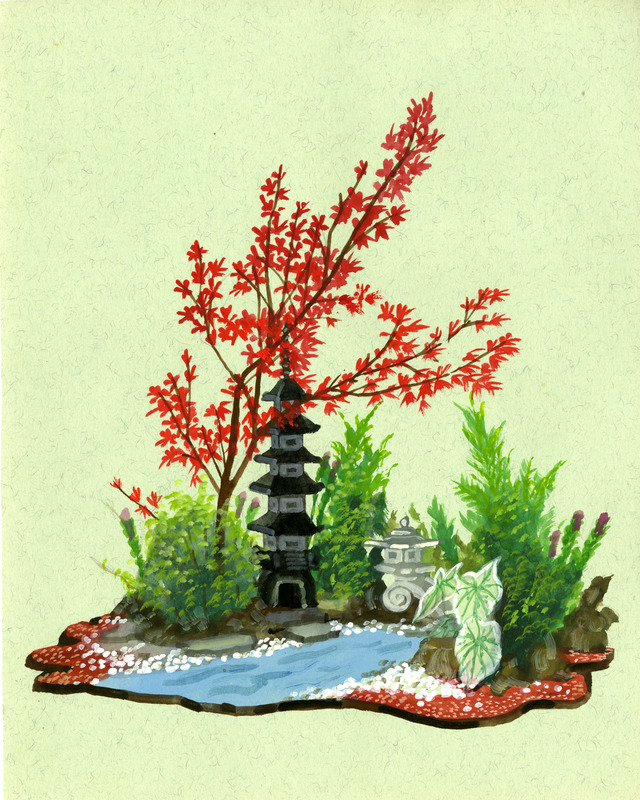
Miniature scenic floral art
This painting is based on her miniature scenic floral art inspired by a Haiku poem by Kawahigashi Hekigoto.
The crimson carpet
Scattered with maple leaves where no one stepped,
My garden path is better left unswept.
-Hekigodo-
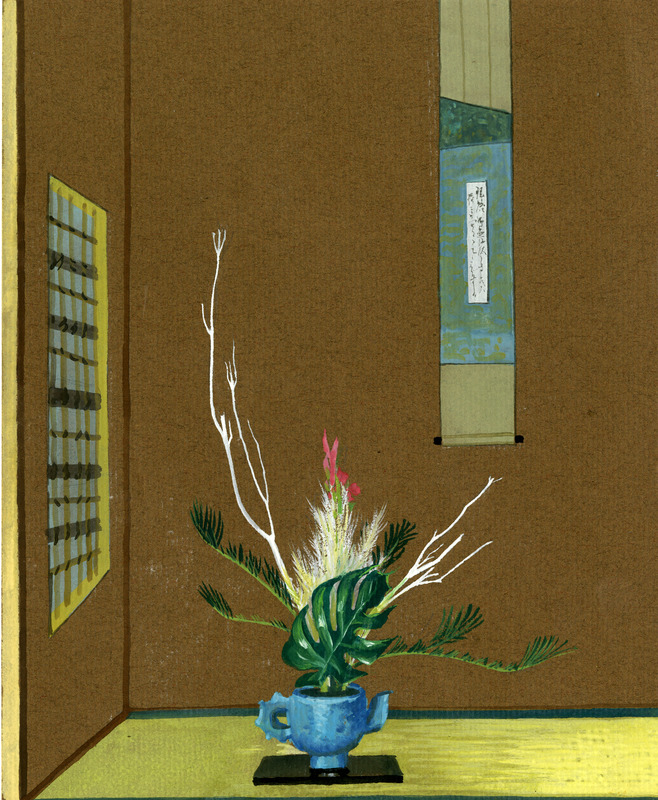
Modern Rikka
She painted her flower arrangement created in 1948 under the Ikenobo teacher, Mr. Kokurio. This arrangement is set in the old Ikenobo college's tokonoma alcove in the tea room.
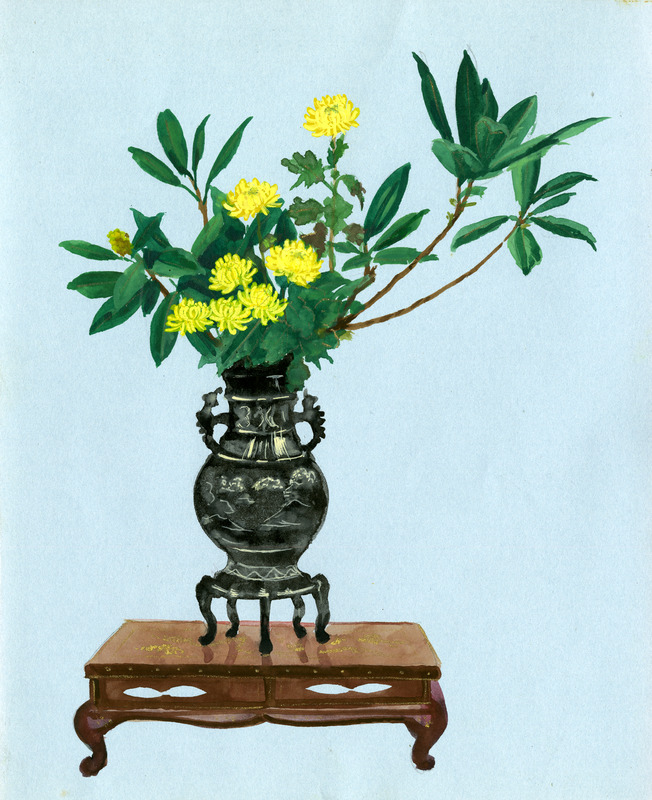
Nageire (A samurai's delight)
Title: A samurai's delight
Magnolia leaves, a white chrysanthemum classically graces the old Chinese inlaid bronze nageire vase. The table is black lacquer with an inlaid pearl design. A touch of oriental adds exquisite beauty to an occidental room.
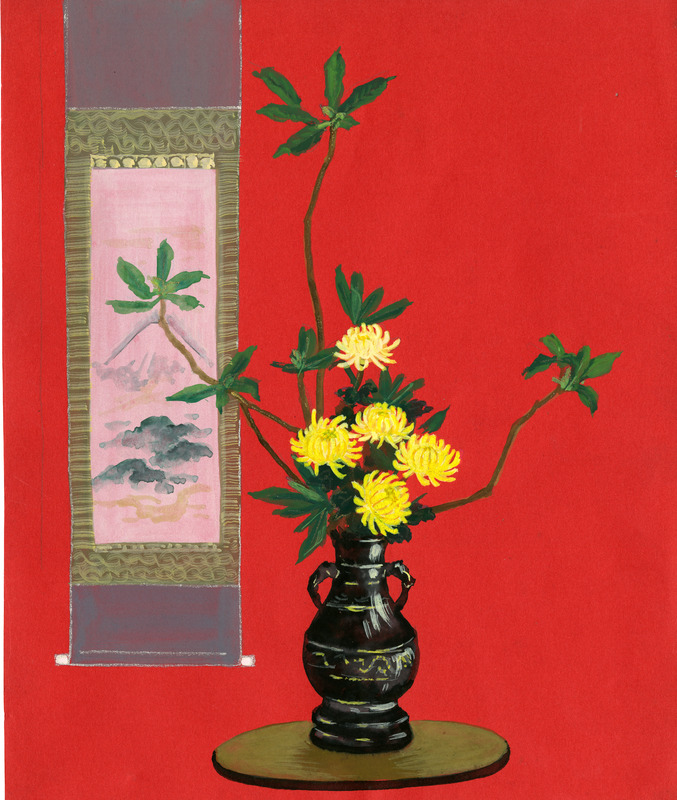
Nageire (Reaching heaven)
Title: Reaching to heaven
Philodendron branches stripped of all leaves to the tips make very pretty line material as in this nageire arrangement. Five yellow chrysanthemums form to body or mass of this arrangement. The vase is an old bronze on a teak-wood stand.
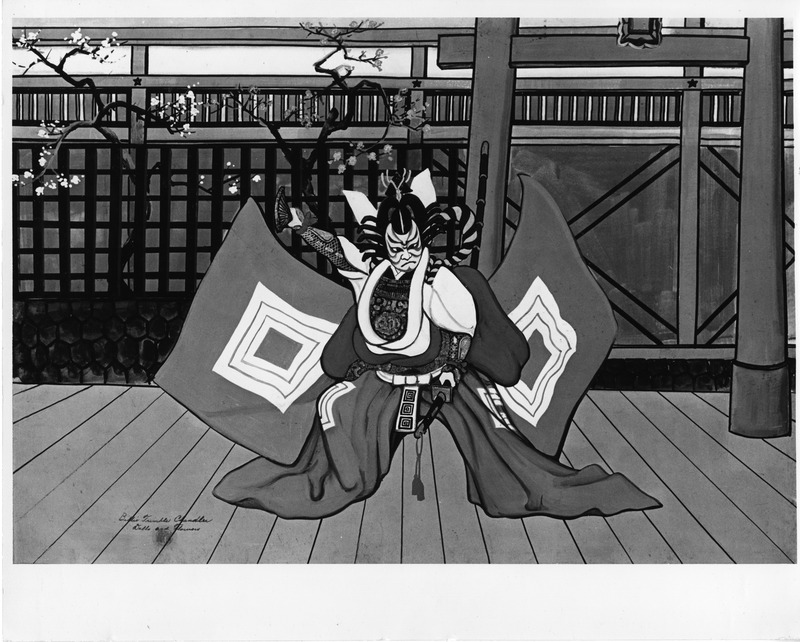
Kabuki
She studied various performing arts in Japan, such as Kabuki and Noh. This picture is one of the popular Kabuki stories, Shibaraku, which literally means "just a moment." This character depicts a superhero with an elaborate costume and makeup. This is one of her Hakata doll collections, and she painted it with the background.
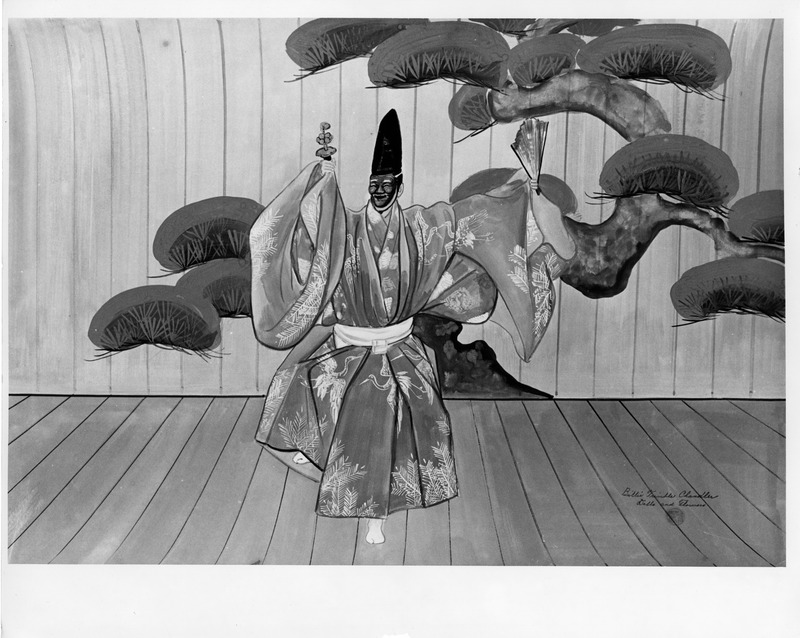
Noh
Noh play is one of the oldest classical stage art, with its distinctive music and dance. The stage setting is very simple, usually, there is only one large pine tree painted at the back of the stage. The actors wear very elaborate costumes and the main actors usually wear masks. This is one of her Hakata doll collections, and she painted it with the background.
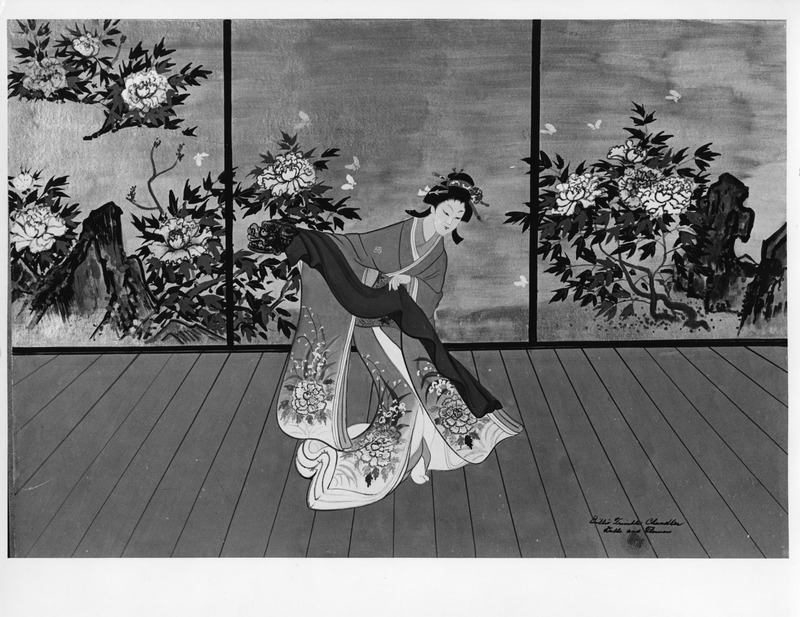
Yaegaki Hime (princess)
Princess Yaegaki is the popular heroin of Kabuki performance and other Japanese performing arts. She is a daughter of a feudal load during the warring state in Japan. She is dancing with the helmet of possessing mysterious power on her hand in this scene. This is one of her Hakata doll collections, and she painted it with the background.
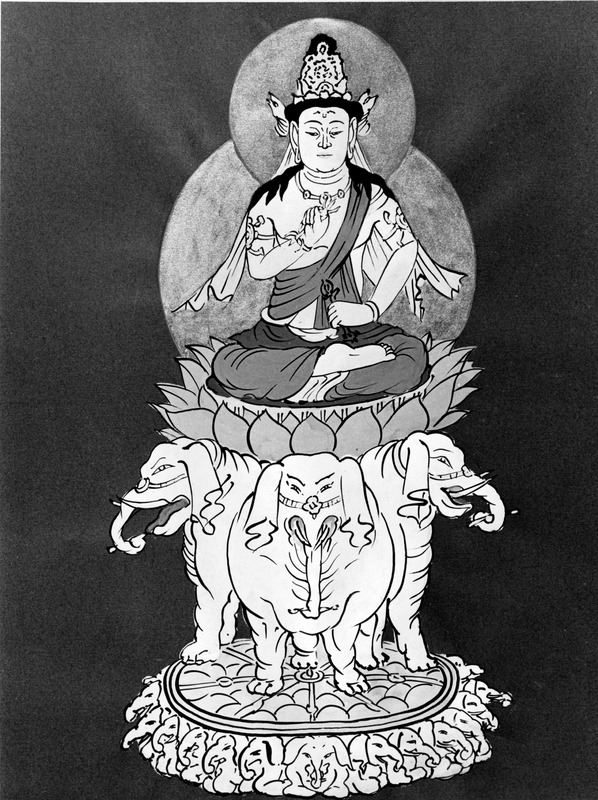
Fugen Bosatsu
Fugen Bosastu, or Fugen Bodhisattva, symbolizes all virtues, universal goodness, and worthiness of Buddhism. Usually, the image is riding on sacred white elephants, and is put aside the "Shaka Nyorai" with "Monju Bosatsu."
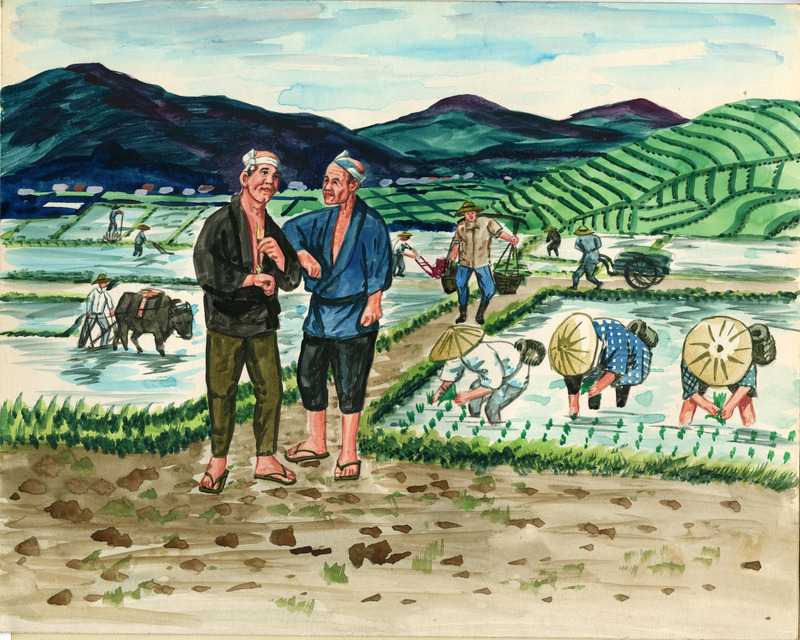
Rice planting
During her stay in Japan, she painted many local people living in rural areas.
Rice is a staple food in Japan, but rice planting is a hard, back-breaking job. She tried to depict the real daily life of farmers along with stories.
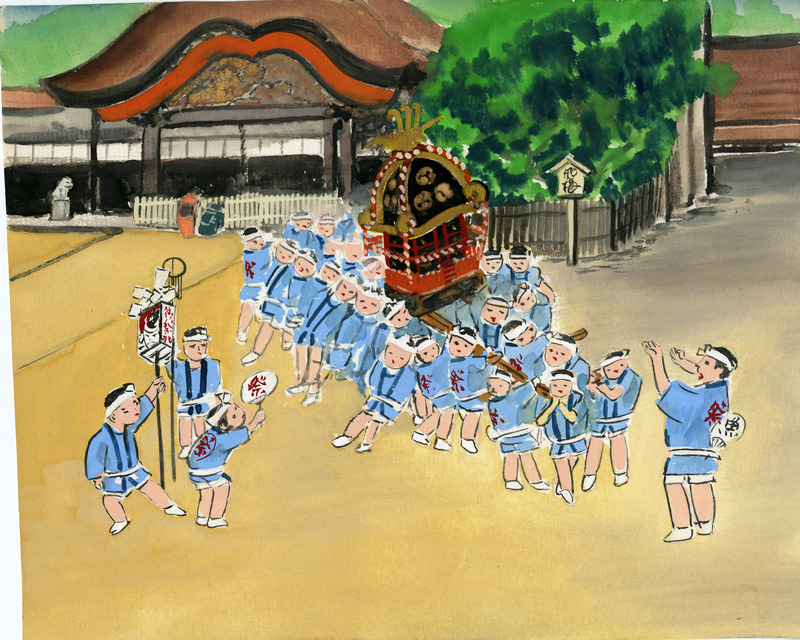
Festival and Mikoshi (portable shrine)
In Japan, every town has its patron god and people carry the spirit of their deity in its Mikoshi, or portable shrine, and parade the streets of the town or around the shrine. This picture depicts the parade in front of Dazaifu Shrine, Kyushu.
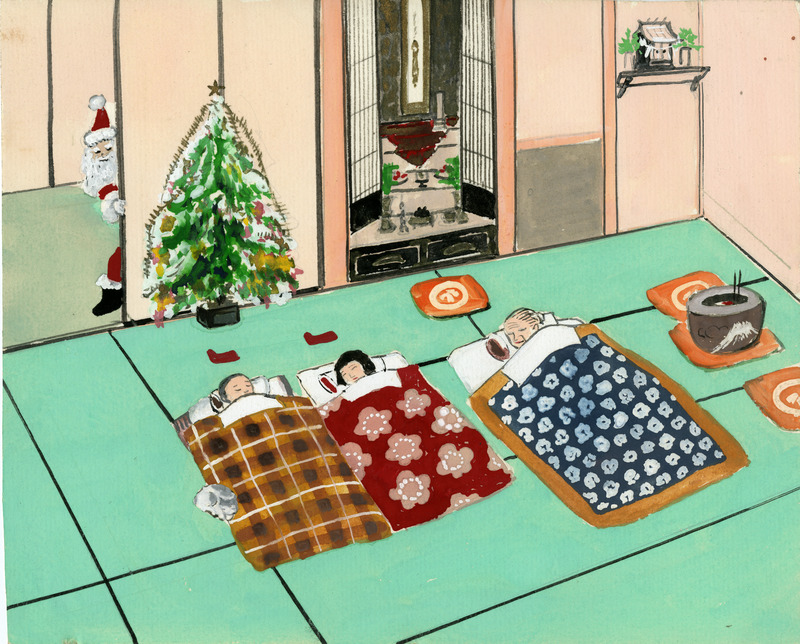
Christmas in Japan
Due to the many people in Christian countries coming to Japan, Christmas is now observed, not as a religious holiday but as a festive one.
Children wait for Santa Clause, not to come down a chimney but through the sliding door.
